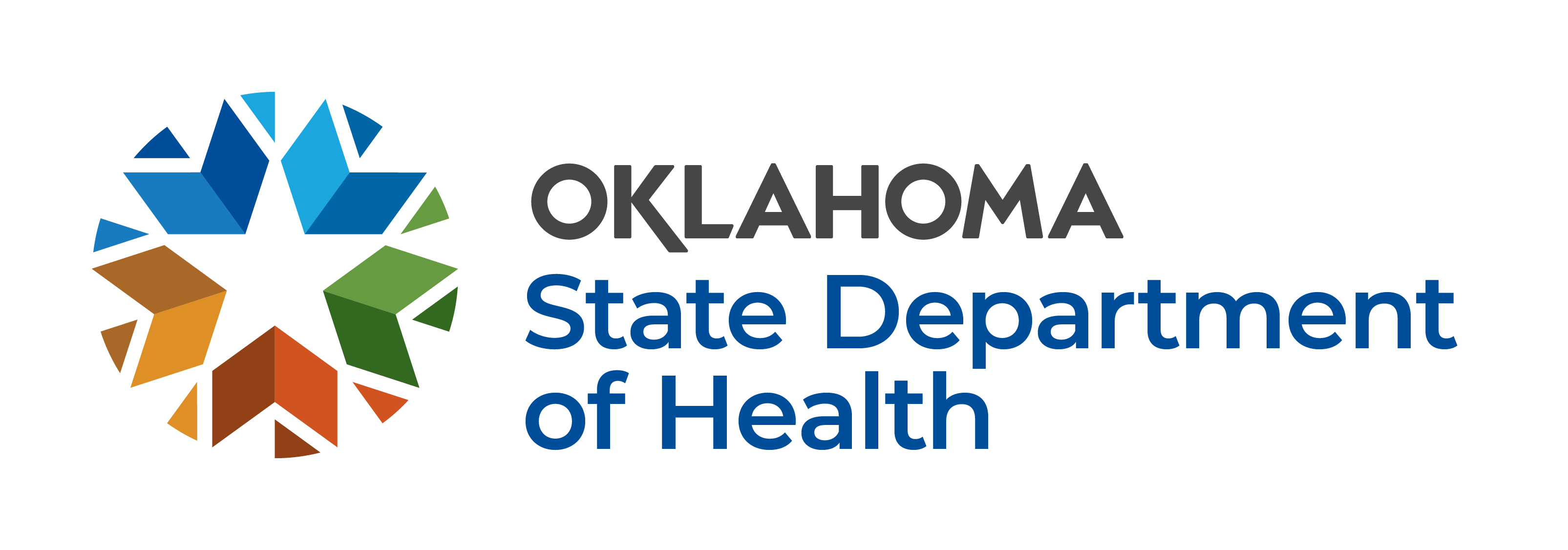Childhood Injury
Injuries are the leading cause of death for children in Oklahoma aged 18 and younger with approximately 265 deaths each year. On average, 2,065 children are hospitalized due to an injury.
Childhood lays the foundation for future success, with safe and supportive environments promoting healthier adult outcomes. Ways to prevent childhood injury are discussed below.
When firearms are stored securely, it reduces the likelihood of unintentional death or injury and it increases time and distance so they are less available as a means of suicide or intentional harm to others.
Secure Storage
Children are naturally curious and learn about their environment through touch and play. When a child finds an unlocked and loaded firearm, they can unintentionally hurt themselves or others nearby. Keeping firearms unloaded and securely locked out of sight by using a cable or trigger lock or placing them in lock boxes or gun safes can prevent injuries and death resulting from curiosity and play.
For information, recommendations and conversation starters: Secure Storage Saves Live.
Safety Conversations
Connection to others is a powerful strategy in suicide prevention and overall mental well-being. By fostering open communication at home, children are more likely to feel seen, heard, and valued. Conversations about firearm safety can help reduce risks and encourage safe practices. Recognizing signs of mental health struggles, such as withdrawal, bullying, or mood changes, is crucial in addressing issues early. If you're concerned about your child's mental health, reaching out to a licensed professional is one of the first steps toward getting them the help they need. By combining supportive connections, education on safety, and proactive mental health care, we can help create a safer, more connected environment for children to thrive.
If you are in crisis, call or text 988 to get connected with a trained professional.
ACEs are potentially traumatic events that occur in childhood. ACEs can include violence, abuse, and growing up in a family with mental health or substance use problems. Also included are aspects of the child's environment that can undermine their sense of safety, stability, and bonding. ACEs are linked to negative health outcomes and conditions in adulthood, such as chronic disease, depression, and substance use. However, ACEs can be prevented. When communities shift the focus from individual responsibility to collective solutions, everyone wins. By reducing stigma and encouraging help-seeking, communities can thrive.
Resources
Leave fireworks to the professionals. The safest way to enjoy fireworks is by attending a professional firework display.
- Never let children ignite, use, or play with fireworks.
- Sparklers can burn up to 2,000°F -- hot enough to melt metal.
- Children’s arms are not long enough to hold sparkers at a safe distance from their body and face. Sparklers can easily ignite clothing.
Alternatives to fireworks include glow sticks, bubbles, or confetti poppers.
What To Do In An Emergency
- Burns: Remove jewelry and any clothing around the burn unless stuck to the skin, cool the burn with running water (do not use ice or creams), loosely cover with a clean cloth, and seek medical attention.
- Eye Injuries: Do not rub or rinse your eyes or apply pressure. Cover them with a clean cloth and seek emergency medical care immediately.
For any serious injury, call 911 or visit the nearest emergency room.
Wheeled Toys
Anytime a child plays with a toy with wheels, such as a bicycle, skateboard, scooter, skates, or tricycle, make sure they have a helmet on. Closely supervise children on riding toys and look for flat, open areas away from traffic for riding.
Batteries
Toys with button cell or coin batteries are required to have a secure closure requiring a screwdriver, coin, or tool to open. Check the toys in your home to make sure battery compartments are secured. Do not allow children to play with or be in contact with button cell or coin batteries. If a button cell or coin battery is swallowed, immediately seek medical attention.
Age-Appropriate Toys
Consider your child’s age when purchasing a toy or game and read the instructions and warning labels. Separate older and younger children’s toys in your household. Younger children love to play with their older siblings’ toys, which may contain small parts that could be choking hazards. For young children, avoid magnets, small balls, marbles, and games with small pieces; anything with a diameter of 1.75 inches or less can be a choking hazard.
Used Toys
Used toys and hand-me-downs may not meet current safety standards. If you have any doubts about a toy’s safety, be cautious and don’t let your child play with it.
Contact Information
Mailing Address:
Oklahoma State Department of Health
Injury Prevention Service
123 Robert S. Kerr Ave., Suite 1702
Oklahoma City, OK 73102-6406
Physical Address:
Oklahoma State Department of Health
Injury Prevention Service
123 Robert S. Kerr Ave.
Oklahoma City, OK
Telephone: (405) 426-8440
Fax: (405) 900-7588
Email: injury@health.ok.gov


